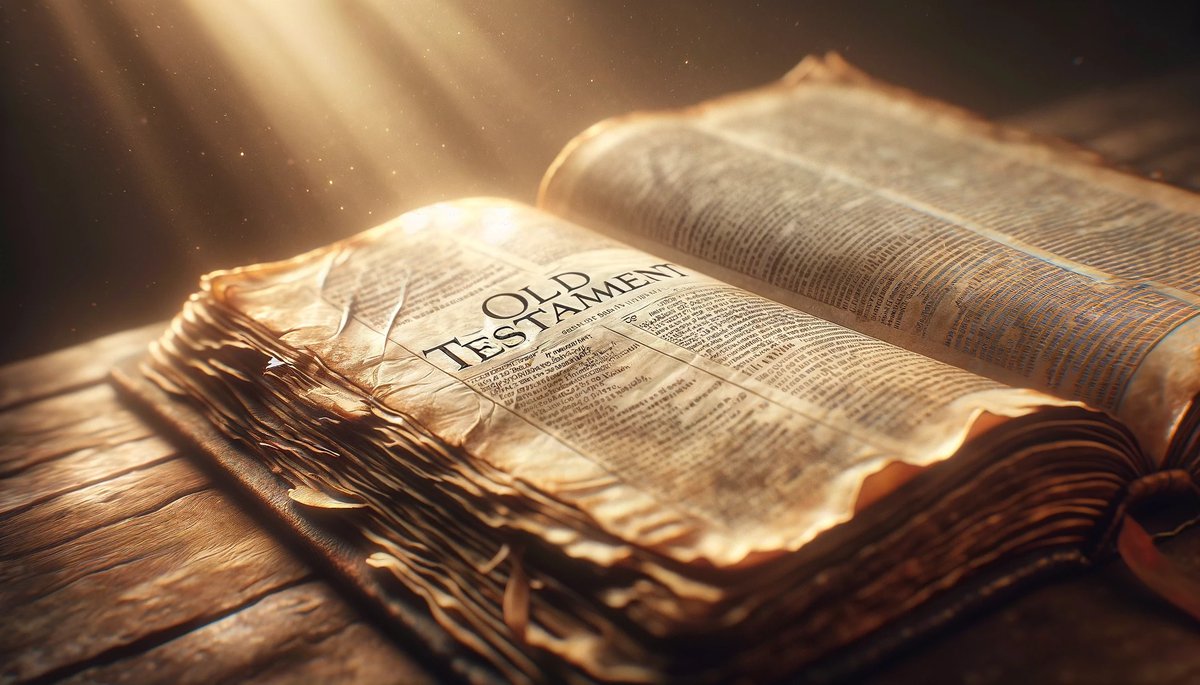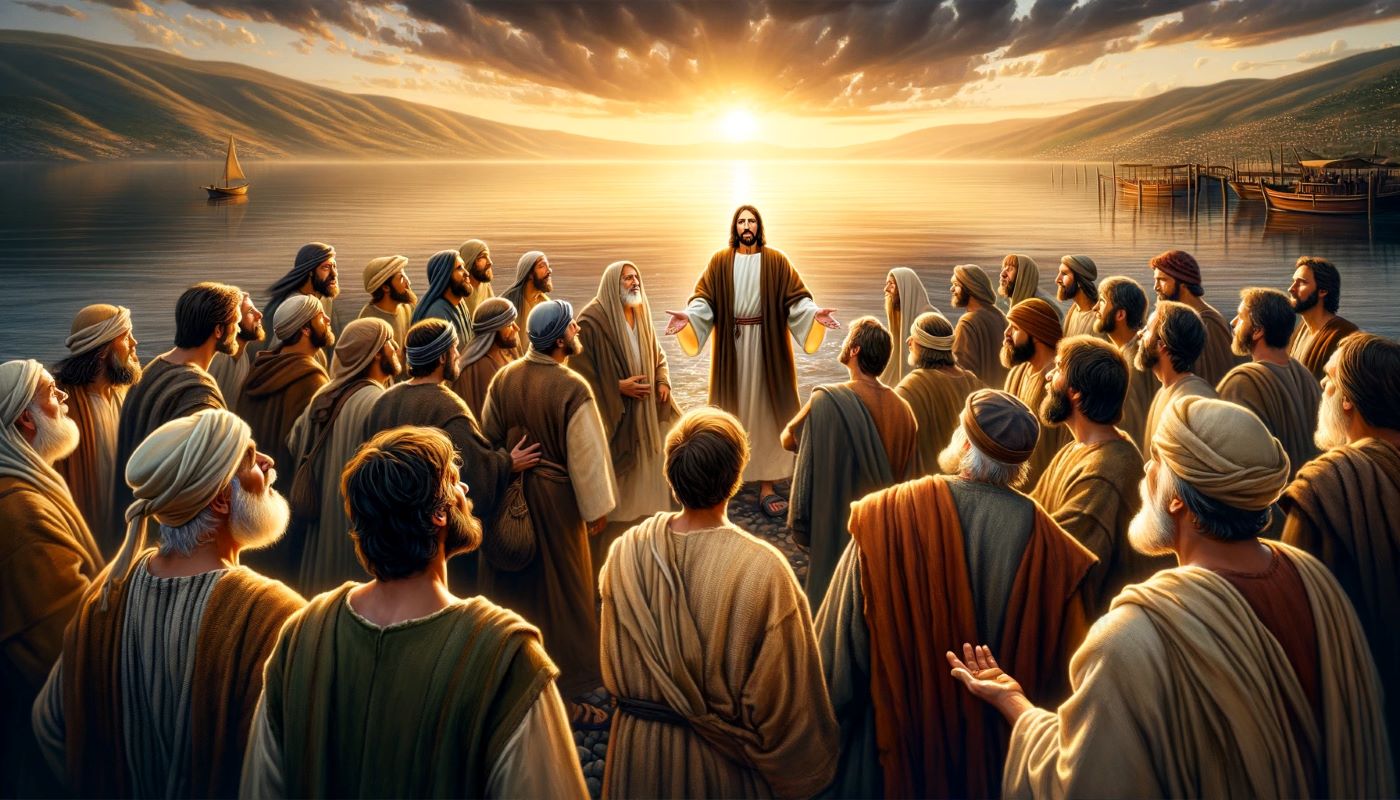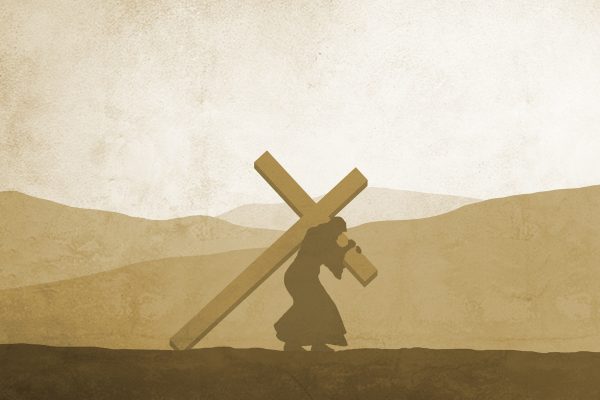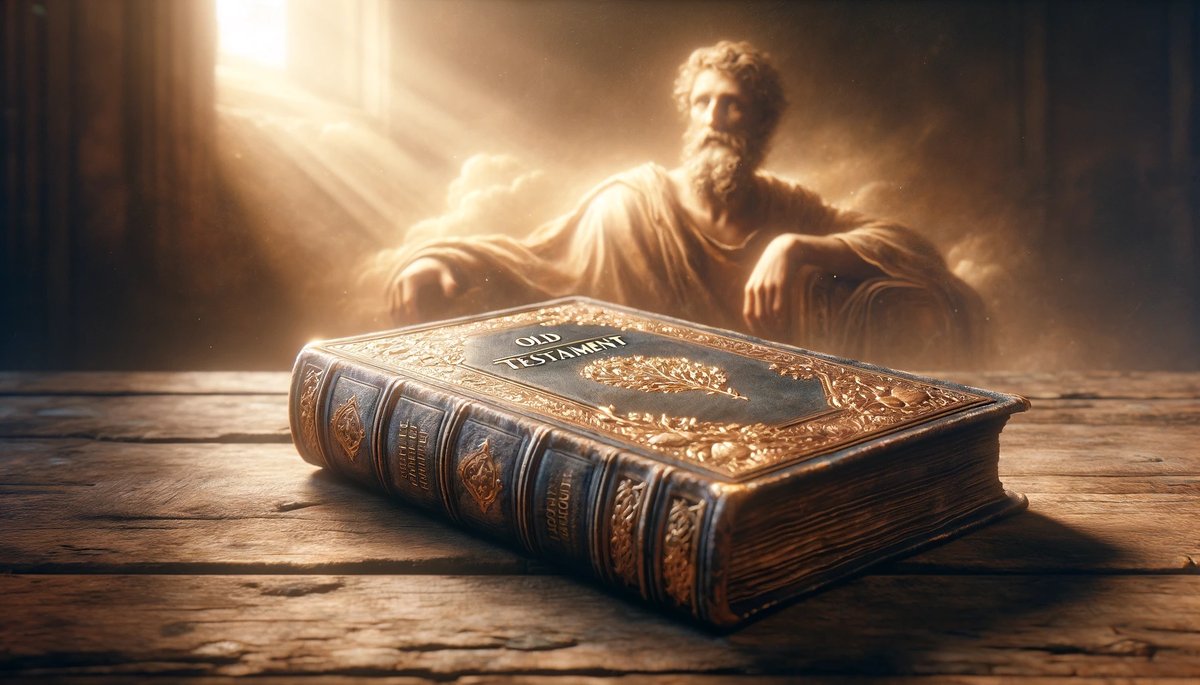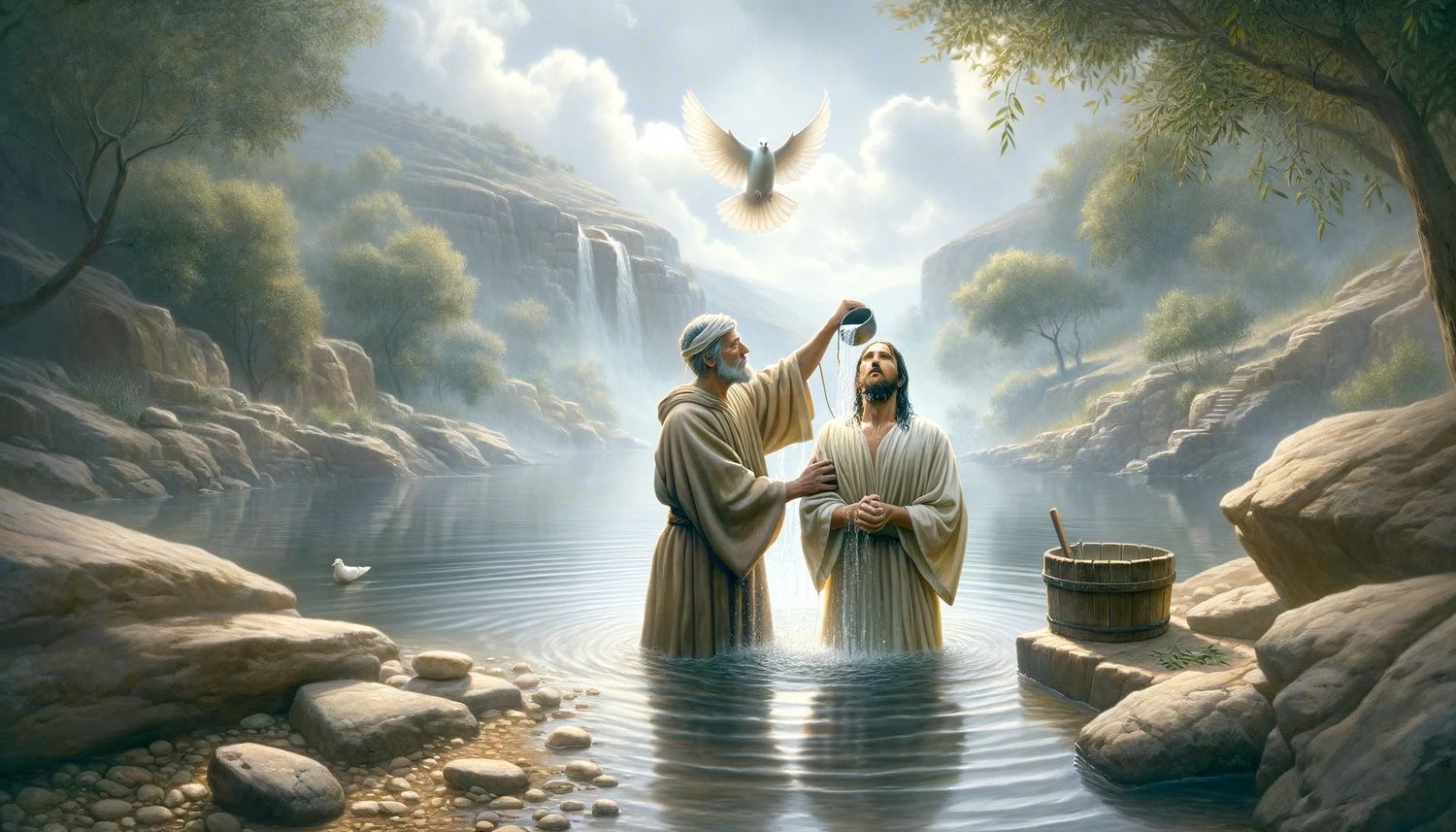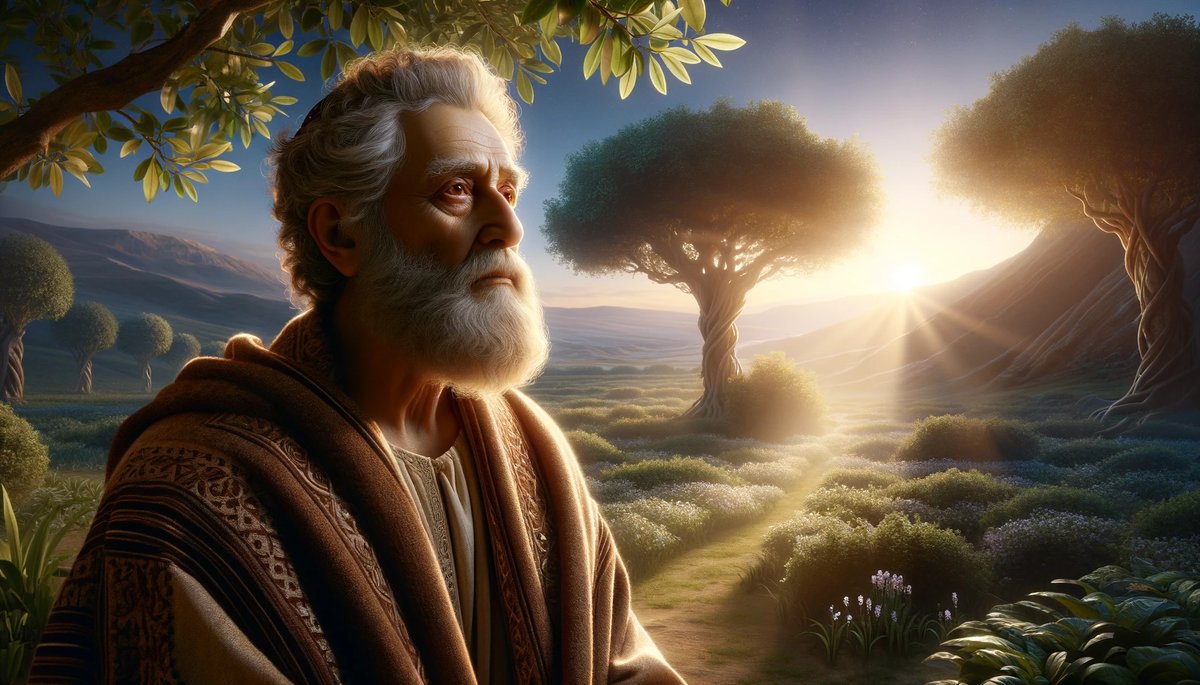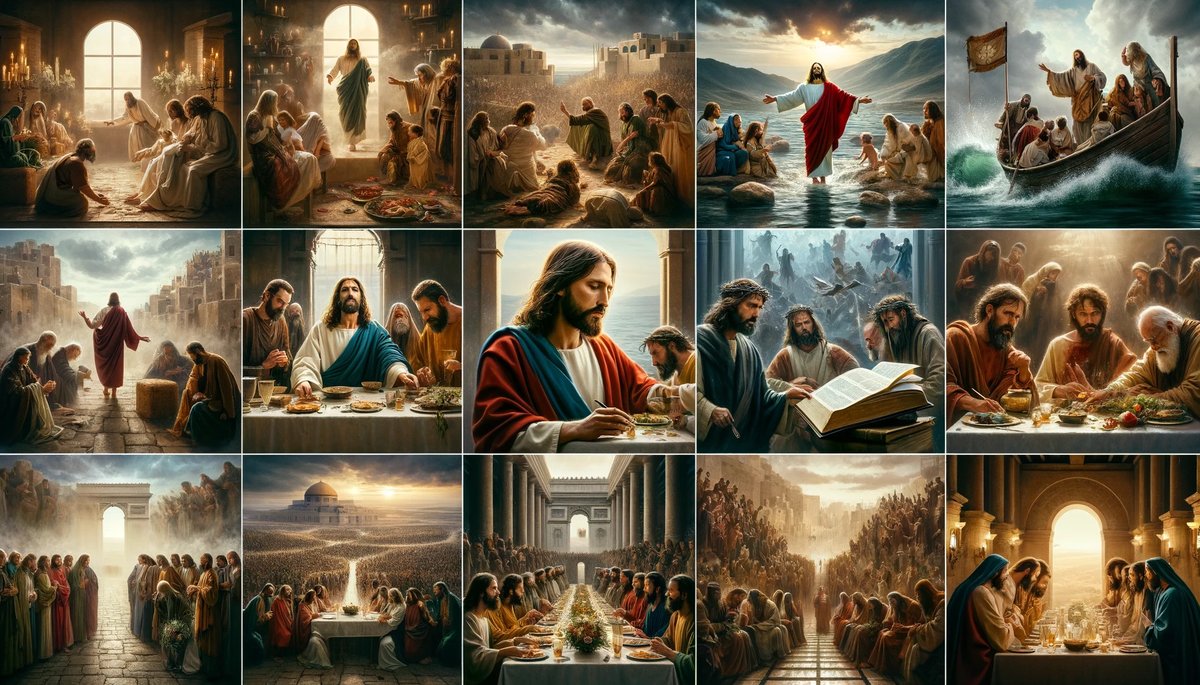Home>Christian Videos>Bible Stories>How Old Was Mary When She Had Jesus Christ


Bible Stories
How Old Was Mary When She Had Jesus Christ
Published: February 29, 2024
Jason DeRose, Managing Editor at Christian.net, uses his expertise in religion and journalism to deepen understanding of faith's societal impacts. His editorial leadership, coupled with a strong academic background, enriches the platform’s diverse content, earning him recognition in both journalism and religious circles.
Discover the age of Mary when she gave birth to Jesus Christ in this insightful Bible story. Explore the significance of this pivotal moment in Christian history.
(Many of the links in this article redirect to a specific reviewed product. Your purchase of these products through affiliate links helps to generate commission for Christian.net, at no extra cost. Learn more)
Table of Contents
The Historical Context of Mary's Age
In order to understand the age of Mary when she had Jesus Christ, it is essential to delve into the historical context of the time. During the 1st century in ancient Judea, the age of marriage and childbirth was viewed differently than in modern times. In this era, it was customary for girls to be betrothed at a young age, often around 12 or 13 years old. This betrothal was a formal arrangement, and the girl would typically continue to live with her family until she reached an appropriate age for the marriage to be consummated. It was not uncommon for girls to marry and bear children at a much younger age than is typical in contemporary society.
The age at which Mary had Jesus is a subject of much debate and speculation. The Bible does not explicitly state Mary's age at the time of Jesus' birth, leading to varying interpretations and theories. However, understanding the historical context of the time provides valuable insight into the societal norms and practices that may have influenced Mary's age at the time of the birth of Jesus.
The Historical Context of Mary's Age
- Ancient Judean Marriage Customs: Explore the customs and traditions surrounding marriage and childbirth in ancient Judea, shedding light on the age at which girls were typically betrothed and married.
- Societal Norms and Expectations: Discuss the societal expectations and cultural norms regarding marriage and childbirth during the 1st century, providing a deeper understanding of the context in which Mary's age at the time of Jesus' birth should be considered.
- Comparison to Modern Practices: Highlight the disparities between historical marriage customs and contemporary practices, emphasizing the need to view Mary's age through the lens of the time in which she lived.
By examining the historical context of Mary's age, we can gain a more comprehensive understanding of the factors that may have influenced her age at the time of Jesus' birth. This historical perspective is crucial in unraveling the mystery surrounding Mary's age and its significance in the broader narrative of the birth of Jesus Christ.
The Biblical Accounts of Mary's Age
The Bible provides valuable insights into the life of Mary, the mother of Jesus, yet it does not explicitly state her age at the time of Jesus' birth. However, biblical scholars and theologians have analyzed various passages to glean potential clues about Mary's age.
-
The Annunciation: The Gospel of Luke recounts the angel Gabriel's visit to Mary to announce that she will conceive and give birth to Jesus. While the passage does not specify Mary's age, it portrays her as a young woman of great faith and humility. This portrayal has led some to infer that Mary may have been in her early teens at the time of the Annunciation.
-
Mary's Betrothal to Joseph: The Gospel of Matthew describes Mary as betrothed to Joseph before she conceived Jesus. Betrothal in ancient Judea often occurred at a young age, further fueling speculation about Mary's youth at the time of Jesus' birth.
-
Cultural Context: Understanding the cultural context of 1st-century Judea is crucial in interpreting the biblical accounts of Mary's age. The societal norms and customs of the time, including early betrothals and marriages, provide important context for considering Mary's age.
-
The Birth of Jesus: The Gospels of Matthew and Luke detail the circumstances surrounding the birth of Jesus, but they do not provide explicit details about Mary's age. However, the emphasis on Mary's purity, devotion, and obedience has led to interpretations that align with the belief that she was likely a young woman at the time.
-
Theological Interpretations: The absence of direct references to Mary's age has led to theological debates and interpretations. Some theologians emphasize the significance of Mary's youth and purity in the divine plan, while others focus on the spiritual rather than chronological aspects of her role as the mother of Jesus.
By examining the biblical accounts and the broader cultural context, we can appreciate the complexities of determining Mary's age at the time of Jesus' birth. While the Bible does not provide a definitive answer, it offers rich narratives that continue to inspire contemplation and theological discourse regarding the age of the revered figure at the heart of the Christian faith.
Theological Perspectives on Mary's Age
The age of Mary at the time of Jesus' birth holds profound theological significance within Christian doctrine and tradition. The theological perspectives on Mary's age encompass a spectrum of interpretations that reflect the diverse theological frameworks within Christianity.
-
The Virgin Birth: Central to many theological perspectives is the doctrine of the virgin birth, which asserts that Mary conceived Jesus through the Holy Spirit without the involvement of a human father. This miraculous event underscores the divine nature of Jesus and the unique role of Mary as the chosen vessel for the incarnation of the Son of God. From this perspective, Mary's age at the time of Jesus' birth is often viewed in connection with her purity and spiritual readiness to fulfill her extraordinary calling.
-
Symbolism of Youth and Innocence: Some theological interpretations emphasize the symbolism of Mary's youth and innocence. Mary's perceived youthfulness at the time of Jesus' birth is seen as emblematic of her unblemished purity and unwavering faith. This perspective underscores the theological significance of Mary's age as a symbol of spiritual innocence and receptivity to the divine will.
-
Theological Debates: The age of Mary has been a subject of theological debates and discussions within Christian scholarship. While some theologians emphasize the historical and cultural context of Mary's age, others delve into the theological implications of her youth in relation to the divine plan of salvation. These debates reflect the complexities of interpreting Mary's age within the broader theological framework of Christian faith.
-
Maternal Role and Devotion: Within theological perspectives, Mary's age is often intertwined with her maternal role and unwavering devotion to Jesus. The portrayal of Mary as a young mother dedicated to nurturing and guiding the incarnate Son of God underscores the theological significance of her age in relation to her role as the mother of Jesus.
-
Marian Doctrine and Tradition: The age of Mary intersects with Marian doctrine and tradition, which encompasses beliefs and teachings concerning the role of Mary in salvation history. The theological perspectives on Mary's age are intricately woven into the rich tapestry of Marian devotion and the veneration of Mary as the Theotokos, or "God-bearer," within various Christian traditions.
The theological perspectives on Mary's age reflect the profound theological contemplation and reverence accorded to the figure of Mary within Christian faith. While the age of Mary at the time of Jesus' birth remains a subject of theological discourse and interpretation, it continues to inspire theological reflection on the divine mysteries of the incarnation and the pivotal role of Mary in the redemptive narrative of Christianity.
Cultural and Societal Views on Mary's Age
The cultural and societal views on Mary's age at the time of Jesus' birth are deeply intertwined with the historical context and prevailing customs of ancient Judea. In the 1st century, the societal norms and expectations regarding marriage and childbirth differed significantly from contemporary perspectives. It was customary for girls to be betrothed at a young age, often in their early teens, and subsequently enter into marriage and motherhood. This cultural backdrop is essential in understanding the views on Mary's age within the societal framework of her time.
-
Betrothal and Marriage Customs: The cultural views on Mary's age are closely linked to the prevalent betrothal and marriage customs of ancient Judea. Betrothal, a formal arrangement preceding marriage, often occurred at a young age, reflecting the societal expectation of early commitment to a marital union. This cultural practice sheds light on the perceptions of Mary's age within the context of betrothal and marriage traditions.
-
Maternal Expectations and Roles: In ancient Judea, the societal expectations regarding women's roles encompassed early motherhood and the fulfillment of maternal duties. The cultural views on Mary's age are influenced by the societal norms that regarded young women as being of childbearing age and capable of assuming the responsibilities of motherhood. This cultural perspective shapes the understanding of Mary's age in relation to her role as the mother of Jesus.
-
Social Status and Family Dynamics: The cultural and societal views on Mary's age also intersect with considerations of social status and family dynamics. The age at which girls were betrothed and married was influenced by familial and communal factors, reflecting the interconnectedness of cultural expectations and familial arrangements. These societal dynamics contribute to the broader understanding of Mary's age within the context of her familial and social milieu.
-
Interpretation of Mary's Youthfulness: The cultural and societal views on Mary's age often emphasize her perceived youthfulness at the time of Jesus' birth. This interpretation reflects the cultural significance attributed to youth and its association with fertility, vitality, and the fulfillment of familial and societal expectations. The cultural lens through which Mary's age is viewed underscores the interplay between societal perceptions and the portrayal of Mary as a young mother in historical and religious narratives.
-
Continued Influence on Contemporary Perspectives: The cultural and societal views on Mary's age continue to influence contemporary perspectives and interpretations. The historical context of Mary's age serves as a foundation for understanding the enduring impact of cultural and societal norms on the perception of her youth and maternal role. This ongoing influence underscores the enduring significance of cultural and societal views in shaping the understanding of Mary's age within the broader religious and historical narrative.
By examining the cultural and societal views on Mary's age, we gain valuable insights into the historical and cultural factors that have shaped the perception of Mary as a young mother at the time of Jesus' birth. These views provide a nuanced understanding of the societal expectations and cultural dynamics that have contributed to the enduring portrayal of Mary within religious and historical discourses.
Read more: How Old Was Jesus Christ When He Died
Conclusion: Understanding the Age of Mary at the Birth of Jesus Christ
The age of Mary at the time of Jesus' birth remains a subject of profound contemplation and scholarly inquiry within religious, historical, and theological discourses. While the precise age of Mary is not explicitly stated in the biblical accounts, a comprehensive understanding of her age necessitates a multifaceted exploration of historical, cultural, and theological perspectives. By delving into the historical context of ancient Judea, the societal norms and expectations surrounding marriage and childbirth, the biblical narratives, and the theological interpretations, we gain valuable insights into the complexities of determining Mary's age.
The historical context of Mary's age provides crucial insights into the prevailing customs and practices of ancient Judea, where early betrothals and marriages were customary. Understanding the cultural and societal views on Mary's age illuminates the interconnectedness of historical, familial, and communal dynamics that shaped the perception of Mary as a young mother. The theological perspectives on Mary's age underscore the profound theological significance attributed to her youth and purity within Christian doctrine and tradition, reflecting the theological contemplation of the divine mysteries of the incarnation and Mary's pivotal role as the mother of Jesus.
The age of Mary at the time of Jesus' birth is intricately woven into the rich tapestry of historical, cultural, and theological narratives, each contributing to a more nuanced understanding of the revered figure at the heart of the Christian faith. While the age of Mary may continue to spark debates and interpretations, it remains an enduring subject of contemplation that invites further exploration and reflection within the broader context of religious scholarship and devotion.

